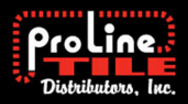Many Individuals who are looking to add new flooring into their residence choose not to go for laminates and hardwood floors. Maybe they do not like the price or they would like their home to try to be quieter and absorb sound. What these people might not be aware of is all the different styles and materials that can be turned into carpets. Weeki Wachee residents be aware that there are a variety of synthetic as well as natural fibers which are used in the construction of carpets. It is important to know the characteristic of the different types of carpeting available.
Polypropylene and Polyester Carpets
Polyester is one of the most common materials that made out of. These fibers are particularly prized among individuals because they can hold vibrant, dramatic colors that do not fade that much over time. In many cases polyester is crafted from recycled materials such as plastic bottles, making one of the most eco-friendly carpets. Weeki Wachee residents should be aware that polyester fibers are susceptible to flattening with exposure to weight, making it a bad choice for a high traffic area in your home. Polypropylene carpets are another popular material because it is extremely soft and their fibers are pretty resilient and resistant to stains, mildew, and shedding.
Wool Carpets and Nylon Materials
Nylon carpets are probably the most popular type of carpet material as it is used in three fourth’s of all manufactured pieces. It is known to be very soft, durable, and offer some resistance to stains. Wool carpets on the other hand are probably considered to have the softest carpets. Weeki Wachee shoppers should be careful when shopping for wool carpets because there is a vast difference between low quality wool and high quality wool. Not only is their a big price difference, but low quality wool carpets are susceptible to staining and not as soft as they can be. Some manufactures however combine wool with synthetic fibers in order to create a carpet that is both beautiful and functional.
*Disclaimer: The views expressed here are those of the authors and do not necessarily represent or reflect the views of Proline Tile Distributors*
